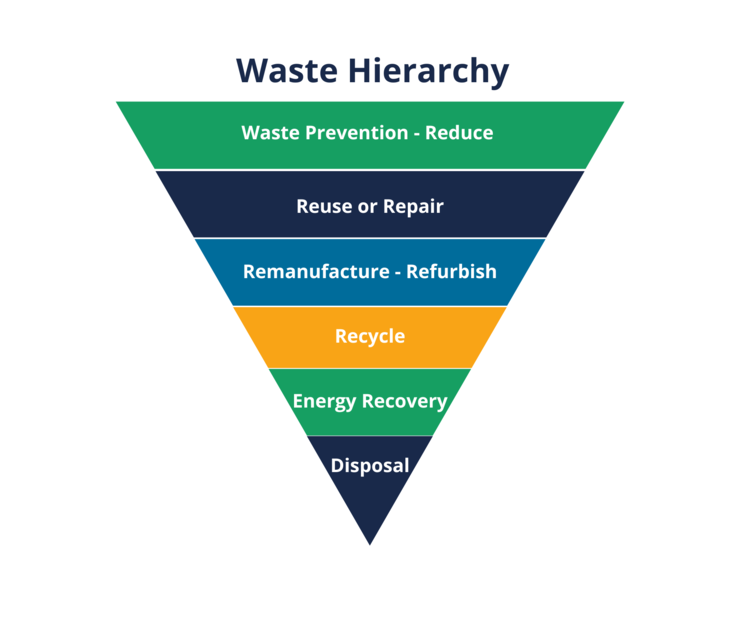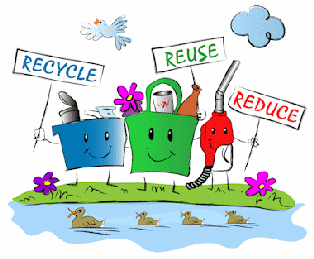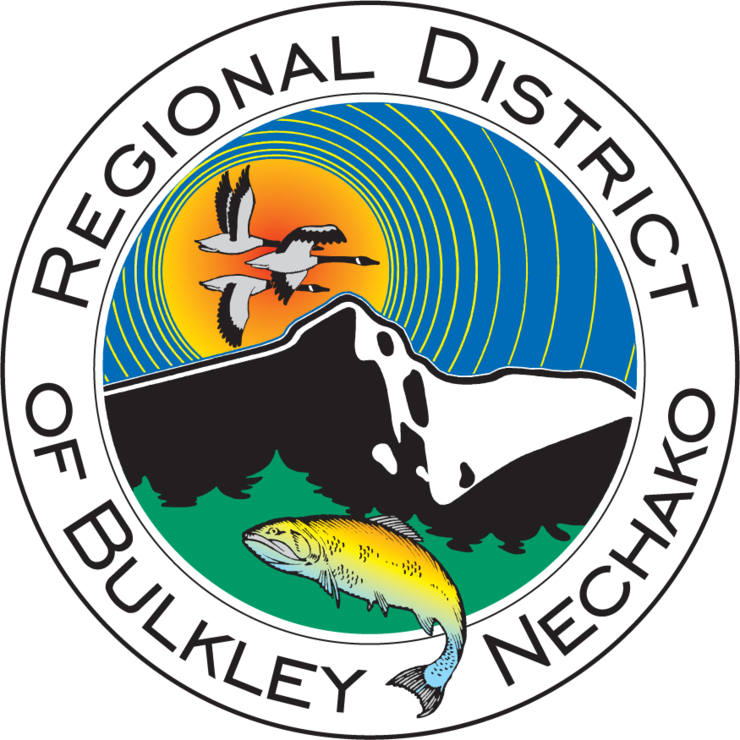The Waste Hierarchy helps us rethink how we purchase, use, and throw away items so that we can reduce costs and our impact on the environment. It helps us understand the preffered approaches to waste reduction and to maximize the recovery and value of used materials.

The waste hierarchy begins with REDUCE. This involves preventing the generation of waste in the first place, at not only the manufacturing and institutional levels, but also at the consumer level. The following small changes to your everyday life can make a difference:
- Purchase products that last longer.
- Purchase products that have little to no packaging, or purchase products that typically come in single-use plastic containers, like dish detergent or laundry soap, from a refill store near you instead.
- Bring along reusable coffee mugs – say no to disposable paper cups.
- Use rechargeable batteries rather than single use ones.
- Start composting at home.
The next steps, REUSE, REPAIR, REFURBISH/REMANUFACTURE, encourage getting the most use out of products as possible through repairing or refurbishing the item before entering the recycling or solid waste stream. If you have items in good condition, consider placing them in the Reuse Shed at your local Transfer Station and Recyling Depot for others to access.
RECYCLING is the next step in the hierarchy, which also includes composting of food scraps. This is the process of taking a waste material and making it into a new item. Recycling still uses resources, however, and has hidden costs from collection, transport and processing.
The the last option before disposal, is RECOVERY. This refers to the ability of a waste item to be used for energy creation, such as methane collection or pellets made from wood waste. Recovery for energy is occurring in the RDBN! Several companies are creating a valuable product out of biomass, transforming it into pellets used for industrial power production, residential heating, animal bedding and natural sorbent (for spill control). By using waste products, such as cordwood, wood chips, waste paper, and other agricultural by-products, these companies have been able to create clean, efficient energy from waste.
The last step in the hierarchy is DISPOSAL, which refers to items that cannot be reduced, reused, recycled, or recovered. This should only be used as a last resort.

